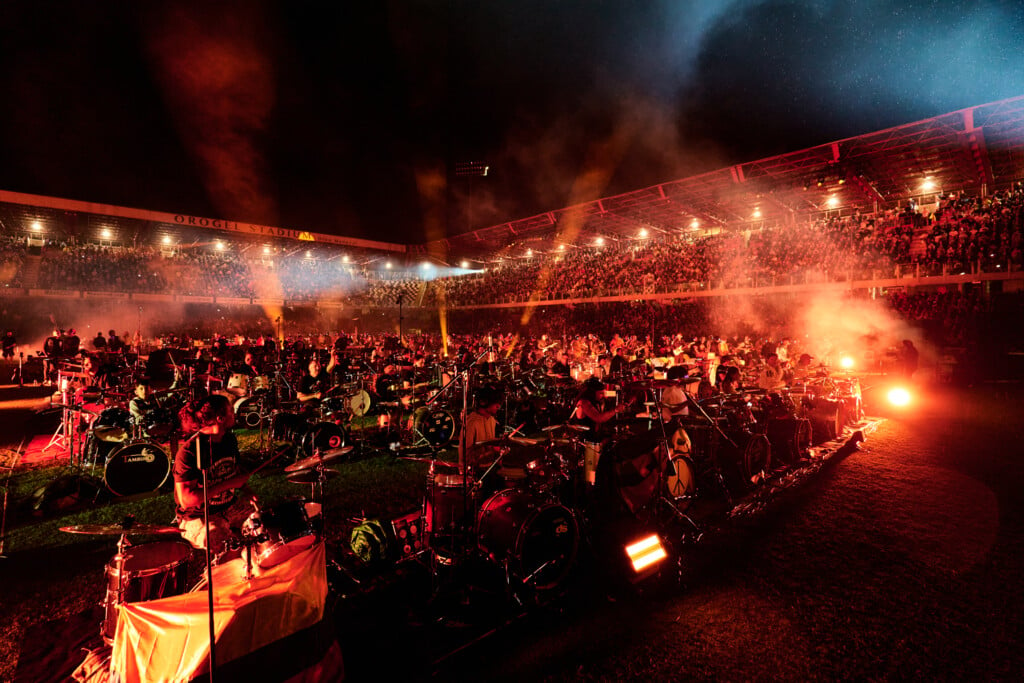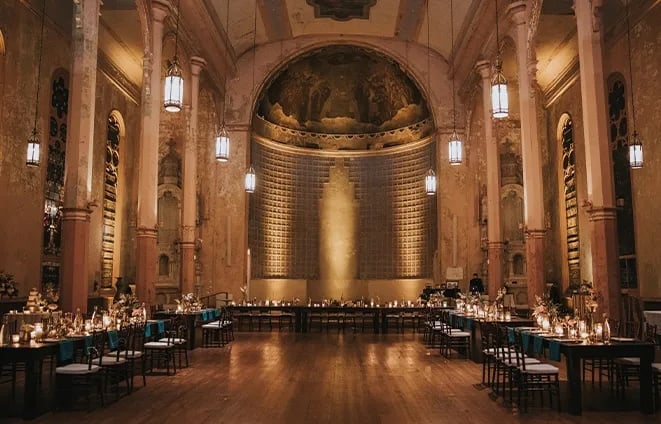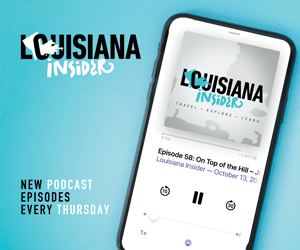Around Louisiana
Northern
PLEASE LISTEN
ears for evan
With his mop of spun-gold hair and large expressive eyes spiked with thick dark lashes, Evan Holley is a beautiful, sparkling 3-year-old. The birth of Evan and his twin brother, Aiden, was the answer to prayers made by their parents, Terry and Angela Holley, who awaited pregnancy for six years. According to Stacy Temple of Monroe’s News Star, the twins were born prematurely on March 11, 2007. Angela’s pregnancy was fraught with difficulty from the beginning. The Holleys were informed by their physician that one twin (who would be named Aiden after birth) had suffered a stroke while in utero. The parents braced themselves to prepare for a child who would be born with complications, and indeed, Aiden was born with mild cerebral palsy.
But Terry immediately knew in the delivery room that something was wrong with
his other son before he actually saw him.
“His cry was different,” he said.
Evan was born without ears.
Specifically, he was born with bilateral microtia/atresia, a condition that causes the absence of both ear canals and actual external ears, along with another condition known as hemifacial microsomia that causes underdevelopment of the lower half of his face.
Before they ever left the hospital, the Holleys began contacting specialists, and being proactive paid off.
Although Evan was taught sign language, he can now communicate verbally due to a bone conduction hearing aid he wears on a headband 24/7.
Even while working full-time and taking care of two sons with special needs, Angela’s compassion wasn’t directed only to her family. She visits with area NICUs and talks with parents and also participates in Families Helping Families. And a new but no less vital cause has appeared on the horizon: In a few short years, Evan will start school, and the family finds itself facing another possible problem: peer ridicule by schoolchildren because of his appearance.
The Holleys, through an online family support group, learned that Evan is a prime candidate for surgery that would construct for him a pair of ears.
But the Holleys’ elation at the good news was short-lived after they were told by their insurance company the surgery was considered “cosmetic” and therefore would not be covered. So the Holleys have another challenge to face: find a way to pay for it themselves.
At first reluctant to go public with Evan’s condition, they decided to ask for help while also educating people.
“It’s really hard asking for help and having your baby publicized and having to tell people why he doesn’t have ears,” Angela said in the News Star. “But … it’s amazing how people have come together.”
Centric Federal Credit Union has an account for donations made out to the Evan Holley Medical Fund, and collection canisters can be found in area businesses.
For more information, visit www.earsforevan.blogspot.com.
FORK IN THE ROAD GIUSEPPE’S
I don’t know what it is about a Sunday brunch that beckons so much, especially during warmer weather days. Maybe it’s the luminous colors of the morning that strike as you leave church, or maybe it’s a holiday, such as Mother’s or Father’s Day, that makes you want to venture out for something special. One doesn’t usually associate an ethnic restaurant with a Sunday brunch, and that’s a huge mistake –– one of the best brunches I ever had was in California at a place called Jungry Jose’s: all homemade ingredients, washed down with salty margaritas. At Ristorante Giuseppe, with its Italian menu, this ethnic brunch is no less unforgettable.
To awaken your palate, start off with a Bellini, that magic brew of peach nectar, peach schnapps and champagne, and then savor an appetizer such as Mozzarella Vegeteriana –– grilled eggplant, zucchini, tomato and pesto layering the sweet pungency of mozzarella cheese.
One of my favorite meals, Veal Picata, a tender veal scallop that melts in your mouth in a swirl of garlicky lemon-butter over angel hair pasta, is another perfect menu offering.
Giuseppe’s offers homemade gelatos and tiramisu, but I admire the way he has taken dessert one step further by marrying the Louisiana tradition of creme brûlées with Italian gelato: two flavors of creme brûlée are offered along with one flavor of the gelato, resulting in a delicious cultural merge.
Ristorante Giuseppe, Uptown Shopping Center, 4800 Line Ave., Building A, Shreveport, (318) 869-4548, www.ristorantegiuseppe.com
Central
PROFILE
Alexandria Native Reigns Over New Orleans Mardi Gras
This past Mardi Gras, R. Hunter Pierson Jr., a native of Alexandria, ruled New Orleans for a day. When Mayor Ray Nagin relinquished his power to Rex, King of Carnival, on Fat Tuesday, merriment was the order of the day.
According to John Pope in the New Orleans Times Picayune newspaper, Pierson, who is neighbor to Saints quarterback Drew Brees, watched adoring Saints fans leave Hubig’s pies and bottles of Abita beer on the porch of the Super Bowl’s Most Valuable Player for days after the Super Bowl triumph. (Anyone who witnessed the Saints parade the Tuesday before Mardi Gras, thereby christened “Dat Tuesday,” couldn’t argue that Brees reigned as noble king of the Big Easy.) But Fat Tuesday rolled around a week later, allowing Pierson to reign as monarch of a city whose populace was overjoyed by the Saints victory in Super Bowl XLIV. That had to make it doubly special for the Cenla native son.
Pierson, an LSU graduate who manages private investments in timberland, securities and real estate, has also been newly appointed to the Tulane University board. Civic-minded, he likewise serves on several boards: the Public Affairs Research Council of Louisiana, the Historic New Orleans Collection, Teach for America and the Louisiana Museum Foundation.
Pierson married his wife, Cathy, also an Alexandria native, in 1973, and shortly thereafter the couple moved to the Big Easy. They didn’t expect to stay. Pierson worked at the First National Bank of Commerce. “I always thought I’d learn a trade and go back to Alexandria,” he said.
While driving country roads on their way to a family visit in Alexandria, the Piersons experienced an epiphany of sorts, New Orleans-style.
“As we drove through the road, there was a tractor on the side of the road,” Cathy recalled. “It was right after Mardi Gras. Our son looked at me and said, ‘Where’s the float?’”
Added Hunter, “That’s when I knew we were New Orleanians.”
NEWS BRIEF
Well Done!
It doesn’t hurt, of course, to have a wonderful commodity to boast about in the first place, but add an excellent staff and strong partnerships with the likes of Louisiana Culinary Trails and El Camino Real de Los Tejas to the mix and there’s little wonder why the Natchitoches Convention and Visitors Bureau was named Outstanding CVB of the Year for budgets in the $250,000 to $750,000 range. Executive Director Iris Harper gives her staff and partnerships all the credit for the recognition. The Louisiana Travel Promotion Association, or LTPA, bestowed the award on the Natchitoches CVB during its annual meeting last January in Monroe. A release from LTPA stated that this particular convention bureau received the award due to “the production of exceptional tourism materials, effective partnerships and public relations campaigns.” Due to savvy marketing and partnerships with the Holiday Trail of Lights, Louisiana North Coalition and the aforementioned Louisiana Culinary Trails and El Camino Real de Los Tejas, more than $1.7 million of press mentions were garnered during 2009.
WORTH WATCHING
That’s Just Ducky
The Vernon Parish Chapter of Ducks Unlimited, or DU, recently received news good enough to warm the “quackles” of their hearts. Of the 3,500 chapters of DU throughout the nation, the Vernon Parish chapter was named to the President’s Top 100 list. Clearly, the members of this local chapter, headed by Jeff Skidmore, are no quacks when it comes to duck habitation preservation. Being named to this elite list reflects their fine work when it comes to raising grass roots funding to keep the preservation of duck habitations flying. Highly committed to its cause, DU is the world’s largest nonprofit organization involved in the conservation of threatened North American waterfowl habitats since 1937. President John Pope, who offered his congratulations to Skidmore, said, “DU chapters throughout the country are showing that the future of waterfowl populations and wetlands that filter our drinking water are important to them and their communities.”
Stating how proud he was of his chapter committee members, Skidmore also cited community support.
“I want to give a huge thanks to Alford Motors … and to the folks of Vernon Parish who support us and our conservation efforts for Ducks Unlimited. Without each of them, we would not have achieved this honor.”
Cajun
profile
Remembering Hugh Thompson
Memorial Day reminds me of Lafayette resident Hugh Thompson Jr., whose last years were spent working
on veterans’ issues but who decades earlier had distinguished himself in the military, even after a congressman had accused him of being a traitor.
After serving in the military, Thompson lived many years in Lafayette and served in the Louisiana Department of Veterans Affairs as a counselor. He was born in Atlanta; grew up in Stone Mountain, Ga.; and became part of the Army’s B Company, “the Warlords,” during the Vietnam War, flying reconnaissance helicopters. In the early morning hours of March 16 more than four decades ago, 24-year-old Thompson, accompanied by Glenn Andreotta and Lawrence Colburn, was piloting his OH-23 Raven chopper over My Lai under no enemy fire. He marked the location of several wounded Vietnamese by dropping the standard green smoke signal to indicate that they required aid, but when he returned after refueling, he saw that the wounded he had marked were now dead. From their helicopter, Thompson and his crew witnessed a C Company captain approach a wounded young Vietnamese woman lying in a rice paddy field and execute her. After flying over an irrigation ditch filled with bodies of the elderly, women and children, along with some who were still alive, Thompson, appalled, sent a radio transmission that reported “unnecessary killing … there’s something wrong here.” When he landed to help those in the ditch who remained alive, he was told by a squad leader that the only way to help them was to “put them out of their misery.” Thompson then butted heads with 2nd Lt. William Calley, who outranked him and ordered him from the scene. As the chopper took off, Andreotta witnessed the squad leader killing the civilians in the ditch who
were still alive.
Thompson saw frantic civilians, including children, running from pursuing American soldiers toward a bomb shelter. He landed his helicopter between the Vietnamese and the troops as a shield. As he left the aircraft, he asked Colburn and Andreotta to cover him and open fire on the Americans if they began shooting at him or the civilians. Another officer who outranked him told Thompson he could get the people out of the bunker with a hand grenade, but the sight of the helicopter guns trained on him and his troops quelled his bravado. Thompson saved 11 people and had them evacuated. As they flew over another irrigation ditch filled with hundreds of bodies, Andreotta saw movement, and Thompson once more landed. Andreotta pulled a living little boy from the pile of corpses, and the child was flown to a hospital.
Returning to base, Thompson gave a full report of the massacre to the commanding officers, an act that caused the C Company captain to give the order to “knock off the killing.”
Thompson made an official report of the massacre that was successfully covered up for two years by the military. In 1969, Thompson appeared before a closed hearing of the House Armed Services Committee and repeated his story, only to be vilified by Chairman Mendel Rivers as a traitor for turning guns on his own troops; Rivers unsuccessfully tried to have him court martialed. Thompson began receiving hate mail and death threats, and the bodies of mutilated animals appeared regularly on his doorstep.
William Eckhardt, chief prosecutor of the My Lai case, commented on Thompson’s behavior: “[Thompson] put his guns on Americans, said he would shoot them if they shot another Vietnamese, had his people wade in the ditch in gore to their knees, to their hips, took out children, took them to the hospital…flew back [to headquarters], standing in front of people, tears rolling down his cheeks, pounding on the table saying, ‘Notice, notice, notice’… then had the courage to testify time after time after time.”
In 1998, the three true heroes of My Lai, Thompson, Colburn and Andreotta (who was killed three weeks after My Lai), were awarded the Soldier’s Medal, the Army’s highest award for bravery when not in contact with the enemy.
Today, their behavior at My Lai has been chronicled as exemplary by American and European militaries and cited as examples in their ethics manuals.
Thompson died of cancer in 2006 at the Veterans Affairs Hospital in Pineville. He was buried with full military honors in Lafayette.
Baton Rouge/Plantation Country
WORTH WATCHING
ASCENSION PARISH’S LATEST
Celebrating its 50th anniversary of service, the Ascension Parish Library System recently opened a much-needed branch in Dutchtown on Louisiana Highway 37 adjacent to the Cobblestone Subdivision. Lost for years in a no man’s land of sorts when it came to the proximity of either a bookstore or a library, the small community near Gonzales couldn’t be happier. The new branch is 23,000 square feet filled with more than 16,000 books and is in walking distance for many patrons who reside nearby. According to Darlene Denstorff of the Advocate, Gail Braud Decoteau, Grace Marchand and Gloria White, longtime friends and book-lovers, have visited the Ascension Parish Library system since its inception in 1960. They claim, however, that the Dutchtown location has been needed in their neighborhood for a long time.
Citing the lack of bookstores in the small community, Decoteau is more than thrilled a search for a good book won’t mean a trip to Gonzales. Opening two years after its original groundbreaking, the library will offer its patrons a wealth of cultural, informative, educational and just-plain-enjoyable amenities. Twenty computers will be on hand for public use, and adults can while away time in their own reading and references areas. Teens will have their own space in which to read and ponder, and children will enjoy an activity room for programs, crafts and story time.
This parish library system also has an interesting online book club service that’s well-worth exploring and covers several genres.
OH, BLACK CAULDRON
JAMBALAYA IN GONZALES
The Jambalaya Festival in Gonzales was started some 43 years ago by an Avoyelles Parish (where they do right by rice) native, Steve Juneau, who wanted to give credit where credit was due when it came to jambalaya. Made with rice, the perfect jambalaya must nevertheless not be too grainy, somewhere in the happy medium between velvety and chewy and moist but not liquefied. Seasonings must be balanced like a good chorus –– no shrill overtones sticking out over the other flavors are allowed. Juneau had never been in a region that collectively seemed to nail the requirements that constitute the perfect pot of jambalaya –– texture and appropriate blend of flavors –– all brilliantly achieved by cooks in the Gonzales area. The festival was an immediate success, and a year later Gov. John McKeithen really “hepped” the endeavor by proclaiming Gonzales the Jambalaya Capital of the World. Since 1967, people have streamed to this spicy fête in droves.
Of the many popular culinary dishes reflective of the globe, the Spaniard’s paella is most similar to jambalaya. Jambalaya is a French-Creole derivative, its root word from the Spanish “jamòn,” meaning “ham.” Jambalayas have been concocted with ham, chicken, fresh pork, sausage, shrimp and oysters –– either all together, separately or in groupings of twos and threes. Cooked down with rice, onions, shortening, garlic, peppers and spicy seasonings that represent the divergence of cultures that went into its ultimate creation and rendered in colors either Mississippi River brown or Red River mahogany, jambalaya is complete Louisiana on a plate.
It’s both a visual and aromatherapy experience to see the large black cast-iron pots cooking outdoors over fragrant hardwood fires, stirred by long paddles there on the festival grounds. This tradition has its roots in church socials when it was easy to cook one-pot dinners outdoors in vessels large enough to feed a crowd. Soon the tradition was carried over to weddings, political rallies and other receptions.
The Jambalaya Festival will be held this year from May 27-30 on the grounds of the Gonzales Civic Center. In addition to this spicy blend immortalized by the Hank Williams song of the same name, food of all kinds will fill the booths. Live entertainment, the Jambalaya Cooking Contest, carnival rides and the Miss and Teen Jambalaya Pageant will all take place. The late Justin Wilson once judged the cooking contest.
For more information, visit www.jambalayafestival.org/.
Greater New Orleans
CAUSE TO CELEBRATE
VICTOIRE
In a profoundly beautiful twilight on the Friday before the Saints confronted the Minnesota Vikings, I drove home from work half- listening to the radio. For some reason, I switched at random to a station I’d never listened to and found myself riveted by a recording of Green Day and U2’s version of “The Saints Are Coming.”
One year before this recording, New Orleans lay under water like the lost continent of Atlantis; the New York Times had written an editorial that described our home as having gone through its death and said it was ultimately finished.
The recording I heard took place the night in 2006 when they performed it before the Saints-Atlanta Falcons game; captured in it was the full-throated cry of the crowd in the Dome: New Orleanians raising the rafters with their triumphant cries of survival and return and intent to rebuild. I’ll admit I drove home rather transfixed by the almost mystical experience –– the power of the music; the roar of the crowd; and the oddly prophetic words written in 1978 by a Scottish punk rocker, Richard Jobson, that began with a verse from “House of the Rising Sun”: “There is a house in New Orleans they call the Rising Sun,” followed by:
A drowning sorrow floods the deepest grief, How long now?
Until the weather change condemns belief, How long now?
The Saints are coming, the Saints are coming…
There were times in the long history of the Saints that I remember with much comedy, moments the boys in black and gold provided me with belly laughs. I remembered in 1988 leaving the television for a few minutes toward the end of a Saints game they were winning. Ironhead Heyward was a member then. I rejoined my family to see them in torture.
“What’s wrong?” I asked them.
“Ironwood dropped the ball,” groaned my mother, who could murder names in moments of excitement.
Then there was the end of a 1999 game when they were also leading; in an attempt to block a pass in the end zone, a Saints player only succeeded in volleyballing it right into the hands of the opponent for a touchdown and a win. The announcer said, “I think the Saints dropped the chalupa!”
A legendary caller known as Abdul D. Tentmakur calling Buddy Diliberto’s show on WWL radio stating he lost all his sheep betting on the game, Russell Erxleben pretending to faint instead of tackling of a runner for a touchdown return: It goes on and on, until now.
It took a lot of character and courage for the likes of Drew Brees and Sean Payton to come to New Orleans right after Katrina, even when some of her denizens left by choice. This team was composed of mostly free agents, some of whom life gave lemons. But they banded together around Payton and Brees like Robin and his Merry Men to beat the odds and champion those who had been written off. They decided to make black-and-gold lemonade, like the New Orleans residents who would not go quietly into the night or have their beloved home dismissed as dead. Maybe it was inspiration on a two-way street. They played out their love for New Orleans on the gridiron. The former joke of the NFL has provided it with one of its most magnificent stories.
The Saturday before the “men in dresses parade,” honoring Diliberto’s claim he would wear a dress if the Saints ever made it to the Super Bowl, I happened to be in a women’s shoe store. A very burly man with a moustache rushed in and announced to no one in particular that he needed to try on the “largest women’s shoes [they] could find for the Buddy D parade.”
I watched in hilarious fascination as he sank his sock-covered feet into gargantuan pumps, stilettos and stacked heels.
The cold windy night of Dat Tuesday’s Saints Super Bowl Victory Parade, I dodged enormous crowds of people happier than any I had ever seen in many Carnival seasons. Largely local, they were a riotous but well-behaved crowd.
New Orleans lives. We have overcome, and at times, we have even triumphed.





